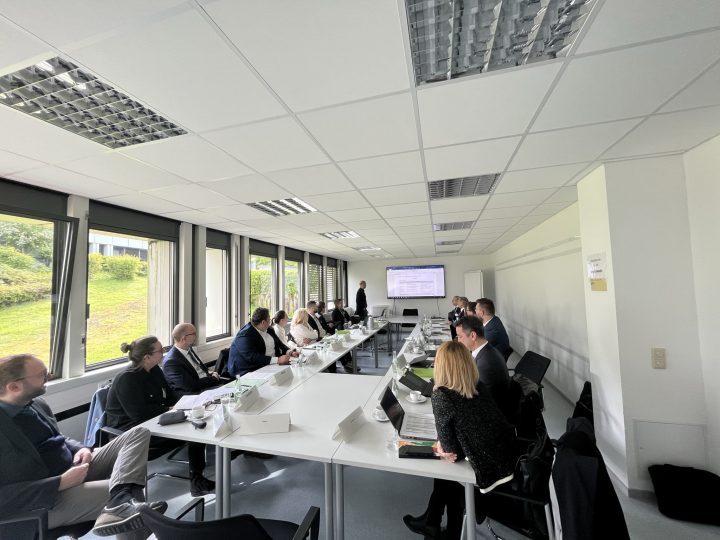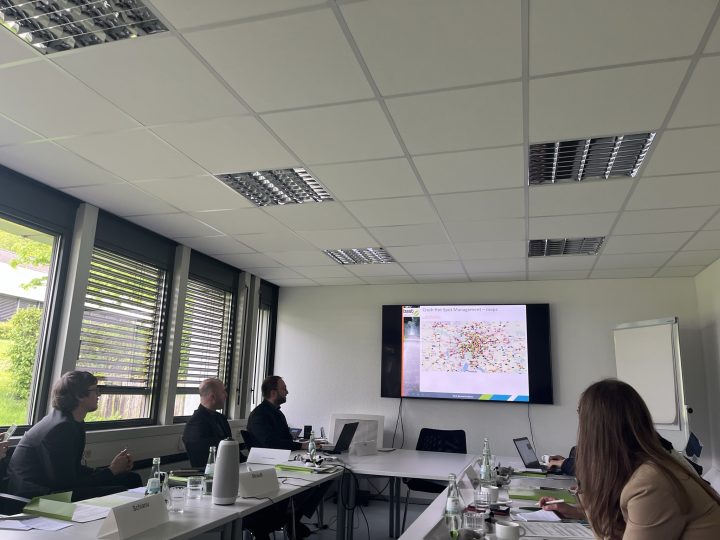Germany study visit on safe infrastructure 2024

A delegation with representatives of national authorities from Bulgaria, Czechia, Romania, and the European Commission, accompanied by ETSC, participated in a study visit on the topic of safe road infrastructure in Germany on 25-26 April 2024.
The visit was co-organised with the BMDV Federal Ministry for Digital and Transport in Bonn and supported by the BASt Federal Highway Research Institute in Bergisch Gladbach, as part of the EU Road Safety Exchange project.
On the first day, delegates visited the BASt Federal Highway Research Institute in Bergisch Gladbach. Here, they were familiarised with Germany’s work on road safety, with an overview of public stakeholders in the transport sector.
The focus of the visit was the safe management of road infrastructure in Germany, with discussions on implementing the Road Infrastructure Safety Management (RISM) directive and applying its procedures.


An overview of the RISM implementation in Germany, was followed by a look at the Network-wide Road Safety Assessment procedure and the theoretical approach to high risk site management.
‘Accident commissions’ play an important role in safe infrastructure management, identifying and evaluating crash hot spots throughout Germany and deciding on measures to eliminate them.
Experts at BASt presented MaKau, a web-based catalogue of countermeasures to combat high risk sites – a best practice initiative developed by the BASt Institute.
This innovative tool supports the ‘accident commissions’ and is designed as a learning system. New countermeasures can be added easily and the effectiveness of old and new countermeasures can be updated continuously based on the results of the effectiveness reviews.


In the afternoon, the group experienced first-hand some of the measures adopted in the identified high risk areas, explained by dr. Marco Irzik from BASt during a walking tour in Cologne.
Different approaches implemented allowed the participants to see how each of these measures increased the safety of the road users, particularly pedestrians and cyclists.
Participants got to see the car-free neighbourhood Nachbarn 60, an award-winning housing development that serves as a model for car-free settlements.
The second day of the visit was held in the BMDV Federal Ministry for Digital and Transport in Bonn. This part focused on practical work with the results of the road network analysis.
Officials from the State Office for Road Construction in Saxony and North Rhine Westphalia presented the procedures and nuances of their work.
A good practice in the application of RISM, the results of the national network analysis (ESN Campaign 2020) were summarised in an exposé, including one-pagers with the essential elements of the identified high risk sites and the potential of the measures.
Finally, participants learnt how identified high-risk sites are dealt with, including a concrete example of an analysis of road areas and proposed measures.

The good practices presented by the German partners highlight the importance of well-developed road infrastructure safety management to ensure that the road network is protected and analysed efficiently, leading to successful treatment of hot spots or high-risk sections.